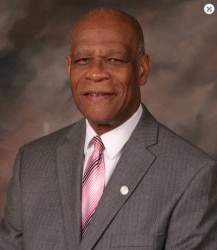We are called to a higher leadership which is spiritually explicit, preemptive, and faith-driven. It goes beyond competitive, leader-exalted, totally independent, and power-wielding styles to a higher leadership that is God-dependent, seeks not its own, does not exalt itself and looks beyond the hills. It represents explicit leadership where the desired goal is modelled.
Preemptive leadership encourages a proactive, prior, precursive action to forestall and enhance. It uses opportunity, faith, courage and continuous prayer as a major ingredient at every design stage. Nehemiah exhibited a focused leadership style that demonstrated initiative, bold action, confidence and communication with God. David demonstrated preemptive leadership in approaching the giant first, as did Joseph when he planned ahead for seven years of famine. Hindsight (experience), insight (present analysis), oversight (management), and foresight (future premeditated actions) led the way.
Problem Identification and Analysis—Nehemiah defined the problem and performed an environmental scan to determine the political, economic, social, technological, legal, ethical and spiritual conditions. He was able to identify strengths, weaknesses, opportunities and threats. He witnessed reputation loss, a dispirited and discouraged Jewish population as he completed his nocturnal analysis and selected from a palette of strategies (Reeves, 2012). Critics appeared early; Nehemiah prayed.
Philosophy and Direction Establishment—Nehemiah espoused a direction of mission and purpose (the present), vision (the future), beliefs (the philosophy), goals and expectations of the organization. He promoted the vision of a unified Jerusalem with a mission to rebuild broken walls, thus linking his mission to the vision and motivating the people, so that “where he was going was what he was doing”, working backwards from his vision to current action.
People—Nehemiah’s target and focus was the Jews, including both peasants and nobles. This narrowed focus enabled him to determine the needs and act accordingly. Critics did not deter; he prayed.
Product/Plan—The visible, concrete product was the wall, a rallying point as a plan of labor was established. We are constantly rebuilding and forming walls whether of customer service, technology, academic excellence, and/or collaboration. Critics had no success; Nehemiah prayed.
Personnel Selection—Nehemiah selected helpers carefully, using families to build wall portions. They worked relentlessly with a “shovel in one hand and a spear in the other”, and a trumpet summons ready. Infiltrators tried to detract; he prayed.
Price–Costs of Quality Chart—Nehemiah budgeted and made provision to procure timber, fed workers from his table, and made sacrifices. He developed a cost of quality chart to spend the bulk of resources on good quality as opposed to poor quality. He handled internal and external defects by rooting out internal dissension, debt slavery, and usury. His simple equation was COQ = (PC+AC) +IFC+EFC) or, Cost of Quality = Prevention Costs + Appraisal Costs) and (Internal Failure Costs + External Failure Costs) (Cost of Quality). He was on the lookout for critics and trickery—Sanballat, Tobiah, Geshem and Shemaiah. He prayed and God gave him the insight to develop foresight.
Promote the Product—The wall was self-promoting. Several heard, saw, and marveled. Yet there were critics. Nehemiah identified a problem, articulated a vision and mission, performed an analysis, put a plan in place, selected workers, promoted and priced the product, met the needs of workers, and prayed at every stage.
Today, if you are having a Nehemiah experience, pray and travel beyond your human capability, for this is the only way that there will be an opportunity for faith exercise. Preemptive leaders will spend most of their time on continuous prevention, appraisal and prayer to lessen the need to repair and recall. Leadership must not be consumed in extinguishing fires, but in preventing them. Leadership must be preemptive and not reactive.

